Receive our newsletter
Your e-mail address is only used to send you our newsletter and information about the activities of Strasbourg Europe. You can always use the unsubscribe link included in the newsletter.
Originally a city-State, Ukraine was the center of the first eastern Slavic state, Kyivan Rus, which was the largest and most powerful state in Europe during the 10th and 11th centuries. Weakened by internecine quarrels and Mongol invasions, Kyivan Rus progressively declined and during many centuries was incorporated into the Grand Duchy of Lithuania, into the Polish-Lithuanian Commonwealth, and eventually absorbed by the Russian Empire. Following the collapse of czarist Russia in 1917, Ukraine was able to bring about a short-lived period of independence (1917-20).
© Picture : University of Tchernovtsi
text : CIA World Factbook 2009
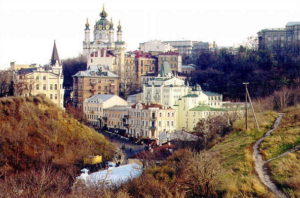 Located on the shores of the Dnepr River, Kiev is one of the biggest and oldest cities in Europe with invaluable historical and cultural monuments. The art and architecture of Kiev are considered world treasures. The most renowned landmarks include: Cathedral of St. Sophia with outstanding mosaics and frescoes dating back to the 11th century; Kievo-Percherskaya Lavra featuring several monasteries and cathedrals; Golden Gate of Kiev, which date back to 1037; Ukrainian Baroque Church of St. Andrew; the magnificent 19th-century Cathedral of St. Vladimir; and many other attractions. As the largest city of Ukraine, Kiev is a leading industrial and commercial center of the country. Kiev’s major industries include: food processing , metallurgy, manufacture of machinery, machine tools, rolling stock, chemicals, building materials, and textiles. The development of Ukrainian economy gave impulse to business activity of the city.
Located on the shores of the Dnepr River, Kiev is one of the biggest and oldest cities in Europe with invaluable historical and cultural monuments. The art and architecture of Kiev are considered world treasures. The most renowned landmarks include: Cathedral of St. Sophia with outstanding mosaics and frescoes dating back to the 11th century; Kievo-Percherskaya Lavra featuring several monasteries and cathedrals; Golden Gate of Kiev, which date back to 1037; Ukrainian Baroque Church of St. Andrew; the magnificent 19th-century Cathedral of St. Vladimir; and many other attractions. As the largest city of Ukraine, Kiev is a leading industrial and commercial center of the country. Kiev’s major industries include: food processing , metallurgy, manufacture of machinery, machine tools, rolling stock, chemicals, building materials, and textiles. The development of Ukrainian economy gave impulse to business activity of the city.
Picture: view on the St André descent, Kiev © ukraine-découverte.com
Saint Sofia Cathedral
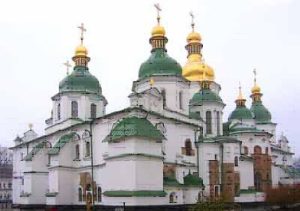 Built in the times of Yaroslav Mudry, the cathedral was supposed to be the counterpart of Saint Sofia in Constantinople. It served as a social, political and cultural center of Kievan Rus, where foreign ambassadors were received. Yaroslav Mudry’s ruling was the time when art, education and culture prospered. The construction of Sofia cathedral played an important role in the formation of Kiev’s look. The cathedral was founded in 1037. Originally it had 5 naves and was surrounded with 2 circled galleries. Despite it was badly damaged during the Tatar yoke and burned many times, the Cathedral is still considered as a masterpiece. Nowadays the building of the cathedral combines constructions of the 17th, 18th and 19th centuries. For many years St. Sofia Cathedral served as a burial place of Kiev princes, such as Yaroslav Mudry, his son Vsevolod, and Vladimir Monomakh.
Built in the times of Yaroslav Mudry, the cathedral was supposed to be the counterpart of Saint Sofia in Constantinople. It served as a social, political and cultural center of Kievan Rus, where foreign ambassadors were received. Yaroslav Mudry’s ruling was the time when art, education and culture prospered. The construction of Sofia cathedral played an important role in the formation of Kiev’s look. The cathedral was founded in 1037. Originally it had 5 naves and was surrounded with 2 circled galleries. Despite it was badly damaged during the Tatar yoke and burned many times, the Cathedral is still considered as a masterpiece. Nowadays the building of the cathedral combines constructions of the 17th, 18th and 19th centuries. For many years St. Sofia Cathedral served as a burial place of Kiev princes, such as Yaroslav Mudry, his son Vsevolod, and Vladimir Monomakh.Odessa
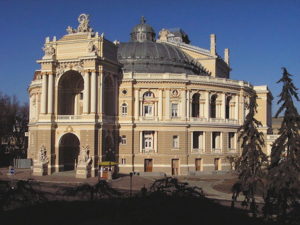 Located in southern Ukraine, Odessa is the biggest city and the major seaport of the shore of the Black Sea. The city is well know for its entertainment industry, with many theatres, concerts, museums. Visitors may find many activities on the shore such as cultural centres, restaurants, casinos and clubs which all contribute to the fun of the city. But one says its most beautiful jewel may its inhabitants : because they are always cheerful and optimistic, Odessa has been nicknamed “capital of humour”. This is why humour contests and musical festivals eliven the city each year.
Located in southern Ukraine, Odessa is the biggest city and the major seaport of the shore of the Black Sea. The city is well know for its entertainment industry, with many theatres, concerts, museums. Visitors may find many activities on the shore such as cultural centres, restaurants, casinos and clubs which all contribute to the fun of the city. But one says its most beautiful jewel may its inhabitants : because they are always cheerful and optimistic, Odessa has been nicknamed “capital of humour”. This is why humour contests and musical festivals eliven the city each year.
Picture: Odessa opera © ukraine-découverte.com
Yalta
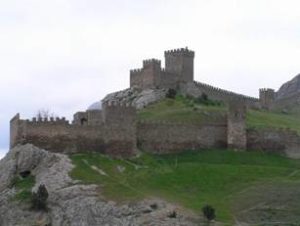 Well know for the famous agreements that were signed in 1945 to settle the fate of Europe after the fall of the Third Realm, Yalta is primarily a resort town known as the most popular in the periphery of the Black Sea after the Tsar Alexander II chose the closer city of Livavia as a summer residence. However, it had a relative economic decline after the fall of the Soviet regime, as rich people preferred to stay in the deserted stations resorts of Western Europe. Ideally located on the southern coast of Crimea, Yalta has many walks to be performed on pebble beaches, before visiting the Cathedral of St. Alexander Nevsky, a fine example of neo-Byzantine, or the former summer residence of the Romanov palace in a Renaissance style surrounded by a beautiful French garden. Finally, the house in which the great Russian composer Chekhov spent the last five years of his life was converted into a museum, and has become a must for any admirer of the composer.
Well know for the famous agreements that were signed in 1945 to settle the fate of Europe after the fall of the Third Realm, Yalta is primarily a resort town known as the most popular in the periphery of the Black Sea after the Tsar Alexander II chose the closer city of Livavia as a summer residence. However, it had a relative economic decline after the fall of the Soviet regime, as rich people preferred to stay in the deserted stations resorts of Western Europe. Ideally located on the southern coast of Crimea, Yalta has many walks to be performed on pebble beaches, before visiting the Cathedral of St. Alexander Nevsky, a fine example of neo-Byzantine, or the former summer residence of the Romanov palace in a Renaissance style surrounded by a beautiful French garden. Finally, the house in which the great Russian composer Chekhov spent the last five years of his life was converted into a museum, and has become a must for any admirer of the composer.
Picture : Yalta © Ukrainian ambassy in Paris
The Carpathians
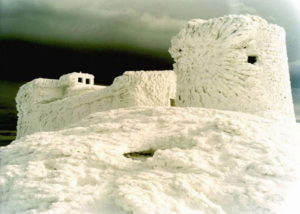 The Carpathian Mountains are a massive mountain range found just West of Ukraine extending over the terriroty of four regions: those of Subcarpatia, Ivano-Frankivsk, Lviv, and Chernivsti. The Carpathian region borders Romania, Hungary, Slovakia, and Poland. Its also in the ukrainian Carpathians where the center of European geography is situated. It will be difficult to find, even in all of Europe, a region where power changes just as often. The area is concentrated with a mix of various cultures from countries that once held power throughout the existance of Ukraine as different historic sites and museums can attest to.
The Carpathian Mountains are a massive mountain range found just West of Ukraine extending over the terriroty of four regions: those of Subcarpatia, Ivano-Frankivsk, Lviv, and Chernivsti. The Carpathian region borders Romania, Hungary, Slovakia, and Poland. Its also in the ukrainian Carpathians where the center of European geography is situated. It will be difficult to find, even in all of Europe, a region where power changes just as often. The area is concentrated with a mix of various cultures from countries that once held power throughout the existance of Ukraine as different historic sites and museums can attest to.
The Carpathian mountains create a landscape of rivers, mountains, clean water, and fresh air, possibly explaining the generous hospitality of local inhabitants.
Picture : Yalta © Ukrainian ambassy in Paris
Khotyn Fortress
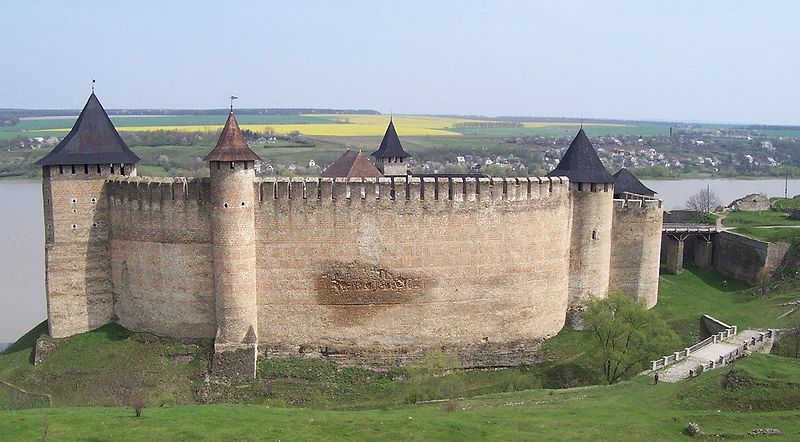 Considered one of the 7 wonders of Ukraine, the legendary Khotyn Fortress, right next to the right bank of Dniester, and not far from the small city of Khotyn, in the region of Tchernivtsi, just celebrated its thousandths birthday. The fortress is surrounded by outer walls measuring 50 meters tall and 6 meters wide. Khotyn has been worldly known since its glorious military campaign of 1621. A turkish army of 150 thousand men ascended on Ukraine, and the ukrainian cossacks joined by Polish troops were confronted and then attacked under the walls of the fortress. Historians recount that the Polish and Ukrainians celebrated their victory for eight days, a victory that protected all of occidental Europe from future sieges. Today, Khotyn is a dream spot to feel a sense of calm and harmony.
Considered one of the 7 wonders of Ukraine, the legendary Khotyn Fortress, right next to the right bank of Dniester, and not far from the small city of Khotyn, in the region of Tchernivtsi, just celebrated its thousandths birthday. The fortress is surrounded by outer walls measuring 50 meters tall and 6 meters wide. Khotyn has been worldly known since its glorious military campaign of 1621. A turkish army of 150 thousand men ascended on Ukraine, and the ukrainian cossacks joined by Polish troops were confronted and then attacked under the walls of the fortress. Historians recount that the Polish and Ukrainians celebrated their victory for eight days, a victory that protected all of occidental Europe from future sieges. Today, Khotyn is a dream spot to feel a sense of calm and harmony.
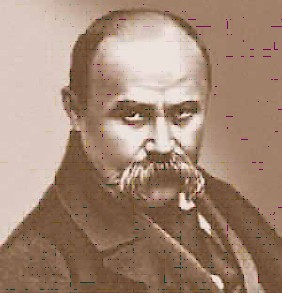
© Ukrainian ambassy in Paris
The Bandura
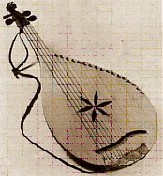 Bandura refers to a Ukrainian plucked string folk instrument. It combines elements of a box zither and lute, as well as to its lute-like predecessor, the kobza.
Bandura refers to a Ukrainian plucked string folk instrument. It combines elements of a box zither and lute, as well as to its lute-like predecessor, the kobza.
The term is also occasionally used by when referring to a number of other Eastern European string instruments such as the hurdy gurdy and the 5 string guitar (commonly referred to by the diminutive bandurka).Musicians who play the bandura are referred to as bandurists. Some traditional bandura players, often blind, were referred to as kobzars.
© Ukrainien ambassy in Paris
Text sources:
Your e-mail address is only used to send you our newsletter and information about the activities of Strasbourg Europe. You can always use the unsubscribe link included in the newsletter.
Information Center
on the European Institutions (CIIE)
Europe Direct Information Center
All rights reserved to the CIIE
Non-profit organization
Mailing address
1 allée Kastner
67000 Strasbourg
France
Visitors entrance
8 rue Boecklin
67000 Strasbourg
France
To provide the best experiences, we use technologies such as cookies to store and/or access device information. Consenting to these technologies will allow us to process data such as browsing behavior or unique IDs on this site. Failure to consent or withdrawing consent may adversely affect certain features and functions.
Europe Direct network
The CIIE team
Contact information and opening hours
Lieu d’Europe
The CIIE offices
Contact us
CIIE’s Documentation Centre & Publications
School presentations & Activities
Borrowing of learning material
Activities for the general public
Institutions of the European Union in Strasbourg
Institutions Under the Authority of the Council of Europe
Other European Organisations in Strasbourg
Sessions of the European institutions in Strasbourg
Visiting the institutions
Map of the European district of Strasbourg
Institutions in Strasbourg in photos
Discover artistic Europe
National holidays of the member states of the Council of Europe